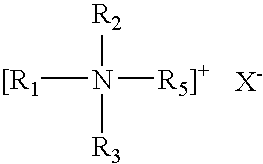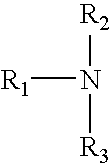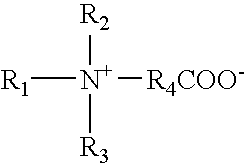Methods for recovering oil from an oil reservoir
- Summary
- Abstract
- Description
- Claims
- Application Information
AI Technical Summary
Benefits of technology
Problems solved by technology
Method used
Image
Examples
Embodiment Construction
[0014] It was surprisingly found that a single component could be added to a flooding fluid to significantly lower IFT while significantly increasing the viscosity of the injected water during the water flooding process in tertiary oil recovery.
[0015] In the methods of the present invention, a flooding fluid having one or more non-polymeric surfactants is introduced, e.g., injected, into the reservoir or formation at elevated pressure for the purpose of pushing or expelling oil from it. Useful surfactants include non-polymeric, viscoelastic cationic, amphoteric, zwitterionic surfactants, and anionic surfactants. Non-polymeric surfactants that form viscosifying aqueous fluids are advantageous because they typically are, as a class, of lower molecular weight than polymers. Amphoteric surfactants have both a positively charged moiety and a negatively charged moiety over a certain pH range (e.g. typically slightly acidic), only a negatively charged moiety over a certain pH range (e.g. ...
PUM
 Login to View More
Login to View More Abstract
Description
Claims
Application Information
 Login to View More
Login to View More - R&D
- Intellectual Property
- Life Sciences
- Materials
- Tech Scout
- Unparalleled Data Quality
- Higher Quality Content
- 60% Fewer Hallucinations
Browse by: Latest US Patents, China's latest patents, Technical Efficacy Thesaurus, Application Domain, Technology Topic, Popular Technical Reports.
© 2025 PatSnap. All rights reserved.Legal|Privacy policy|Modern Slavery Act Transparency Statement|Sitemap|About US| Contact US: help@patsnap.com



